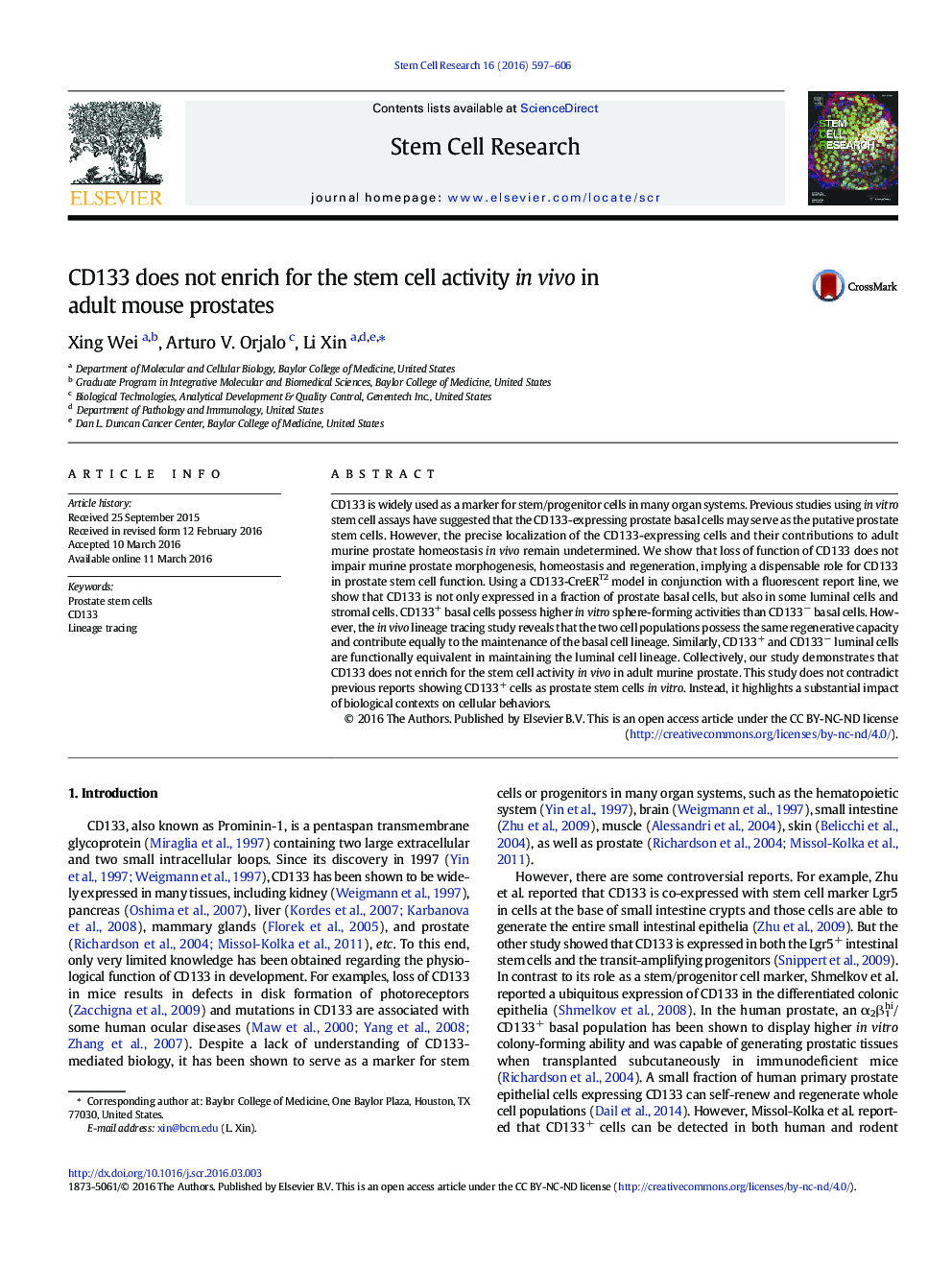| Article ID | Journal | Published Year | Pages | File Type |
|---|---|---|---|---|
| 2094023 | Stem Cell Research | 2016 | 10 Pages |
•CD133+ cells exist in mouse prostate basal, luminal and stromal cells.•CD133+ basal cells possess higher stem cell activities in a prostate sphere assay.•CD133+ and CD133− cells contribute to prostate epithelial homeostasis equally.•CD133 is functionally dispensable for prostate homeostasis and regeneration.
CD133 is widely used as a marker for stem/progenitor cells in many organ systems. Previous studies using in vitro stem cell assays have suggested that the CD133-expressing prostate basal cells may serve as the putative prostate stem cells. However, the precise localization of the CD133-expressing cells and their contributions to adult murine prostate homeostasis in vivo remain undetermined. We show that loss of function of CD133 does not impair murine prostate morphogenesis, homeostasis and regeneration, implying a dispensable role for CD133 in prostate stem cell function. Using a CD133-CreERT2 model in conjunction with a fluorescent report line, we show that CD133 is not only expressed in a fraction of prostate basal cells, but also in some luminal cells and stromal cells. CD133+ basal cells possess higher in vitro sphere-forming activities than CD133− basal cells. However, the in vivo lineage tracing study reveals that the two cell populations possess the same regenerative capacity and contribute equally to the maintenance of the basal cell lineage. Similarly, CD133+ and CD133− luminal cells are functionally equivalent in maintaining the luminal cell lineage. Collectively, our study demonstrates that CD133 does not enrich for the stem cell activity in vivo in adult murine prostate. This study does not contradict previous reports showing CD133+ cells as prostate stem cells in vitro. Instead, it highlights a substantial impact of biological contexts on cellular behaviors.
